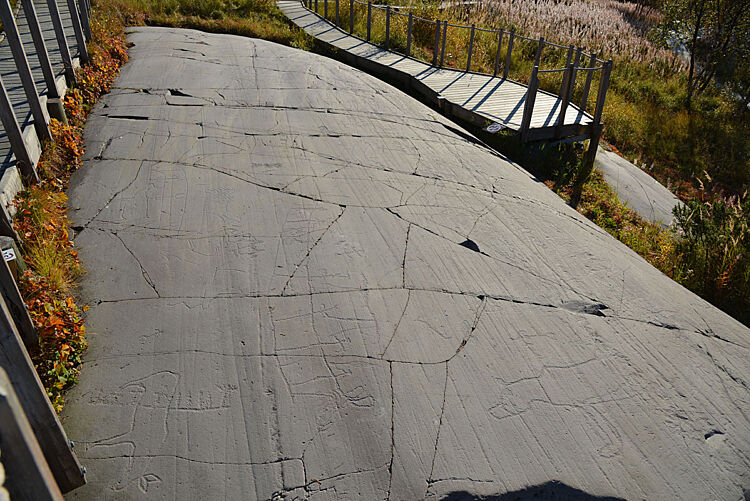The Rock Art of Alta
Alta has Northern Europe’s largest concentration of rock art made by hunter-gatherers. The rock art comprises both rock carvings and rock paintings made from 7,000 to 2,000 years ago. The rock art of Alta was inscribed on UNESCO’s World Heritage List in 1985 as the only prehistoric monument in Norway.

The World Heritage consists of four sites with rock carvings (Hjemmeluft, Kåfjord, Amtmannsnes and Storsteinen) and one site with rock paintings (Transfarelv). Over the years, other rock art sites have also been discovered in Alta. These are not included on the World Heritage List. Hjemmeluft, where the World Heritage Rock Art Centre - Alta Museum is located, is the largest area, and the only one made accessible to the public.
The rock art in Alta is an important archaeological source of material which gives us a unique insight into people’s thoughts and rituals, social organisation, technology and use of resources. Rock art is very diverse, sometimes with large scenes depicting people and animals in various activities, such as hunting, trapping and fishing, rituals and communication. Rock art gives us an insight into real-life events, myths and legends. The figures portrayed are people, reindeer, elks (US “moose”), bears, dogs/wolves, foxes, hares, geese, ducks, swans, cormorants, halibut, salmon, whales, boats, implements and other artefacts, and various geometric patterns and shapes. The rock art in Alta was closely connected to the landscape and what happened to it as a result of land upheaval. There is broad agreement among researchers that the rock carvings in Alta were made on the smooth rock surfaces at the water’s edge. As the land gradually rose, and new rock surfaces came to light, the artists made use of these for their carvings. The oldest scenes are therefore high above present sea levels, whilst the later ones are lower down in the terrain. It is uncertain whether the rock paintings had the same close connection with the sea and the shoreline as the rock carvings. Based on the rock carvings’ height above sea level, we can divide them into different chronological phases that can be dated to the period from c 5000BC to the birth of Christ.